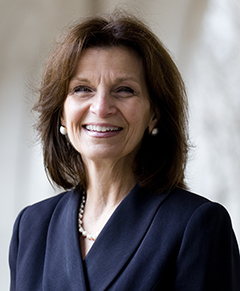
Making Agile Happen: In-Service - Part IV

INTRODUCTION
Previous posts describe educational programming offered at the graduate level through schools of public affairs (pre-service training).
Many existing professional development programs, offered by the public, private and nonprofit sectors, aim to enhance the knowledge and skills of working public leaders. Some programs draw upon expertise resident in public agencies, others apply models employed by business communities, and others have their roots in executive programs offered at universities.
These rich reserves of talent, knowledge and experience can both assist in the development of agile governance training programs and in the assembly of cohorts for the training. Generations of accomplished scholars and leaders in the public and private sectors have the power to innovate and deliver excellence in governance.
Activating these resources to build expertise in agile governance practices can draw on a number of strategies and approaches outlined below. Note, each of these strategies would:
- require additional discussion and determinations regarding proof of concept, development of business and governance plans, and collaboration across sectors,
- be used to supplement pre-service programs,
- be based on governance for that could rest in part with a major association or a newly established 501 c-3 organization,
- call for dedicated resources that could either be absorbed within existing operations or financed through grants or gifts, and
- differ from extant programs so as not to compete with these programs.
In-Service Training
- Create a “Champion Class” subscription program: operates similarly to existing and very successful “Master Class” programs. A streaming platform would allow any subscriber to watch or listen to the inventory of videos made by successful public servants. These leaders could work at the federal, state or local level; could serve as elected officials; could come from the business community working with the public; or could even be international public administrators. Videos would available anytime and anywhere, accessed via a computer or smart phone through streaming channels. This new programming will exploit the knowledge and expertise of successful leaders to develop and lead online courses for public administrators, academia, and the general public. Financial support for these activities would come through a subscription fee structure, with revenues generated to invest in relevant program enhancements.
- SWAT Teams: creates teams of successful public leaders who could engage quickly to assist agencies experiencing immediate challenges or undertaking transformational changes. These would differ from traditional study groups or advisory councils, in that these teams would mobilize quickly and act as advisers to those who need counsel and advice. This activity might best be managed by an existing organization/entity with the capability to offer access for focus groups, quick, timely and ongoing advice, or problem assessment.
- Develop and Implement a Research Agenda: advances studies and defines topics for forward-looking research on how best to apply agile frameworks in the development and implementation of government policies, programs, and regulations by working with academic experts and partner organizations like NASPAA, APPAM, OECD, NAPA and ASPA.
- Create new social media pathways: amplifies agile governance’s impact and reach. A YouTube or similar channel would produce a range of offerings, including:
- Weekly Roundtables on topics of immediate interest to public affairs stakeholders,
- Interview Series, to include one on one interviews with exemplar public administrators who can offer their reflections on the challenges of leading government reforms (a variation on the “Champion Class” idea),
- Study Hours which present segments on the findings of recent studies (which can include work by GAO, think tanks, policy shops in private sector businesses, and other interested entities), and discussing the implications of such studies for those serving in public administrative roles, and
- Produce weekly “Fireside Chats" (podcasts) discussing challenging public leadership and administration issues.
- Create a “Public Leadership Academy”: offers prestigious fellowships for those already in public service to study advanced techniques in administration, and to develop professionally through curated assignments to public administration agencies experiencing challenges. Graduates would earn a credential as a “special forces expert” who could deploy as a SWAT team member (see above).
- Create competitive fellowships for graduate students: supports tuition and cost of attendance for apprenticeships with public agencies, and to gain experience in leading in real life situations. Public leaders could serve as sponsors for apprenticeships. Funding for these fellowships could be sought from outside sources and/or sponsoring public agencies.
- Work with public administration schools who are seeking transformational change: would involve exploring the way schools teach, who they teach, what they teach and where they teach and reimagining programs to align with these new discoveries. A group of over 30 public policy/public administration/public affairs schools have been developing ideas on this transformation, and would be a rich resources for additional consultation.
Next Steps
In creating these programs, special consideration should be given to advancing public administration as a profession, to the key policy challenges that public administrators will face, and to the focusing on the value of agility to public sector outcomes. For example, cross cutting topics could include leveraging the proliferation of AI, across government or administering programs that require highly sophisticated expertise residing outside of government.
Links to all posts in this series:



